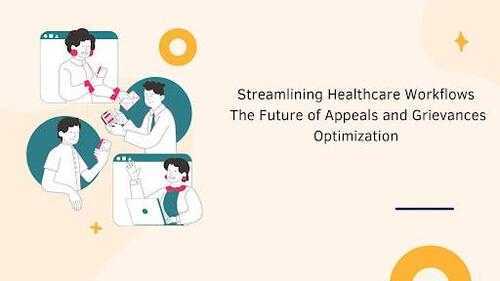

The healthcare sector is experiencing a groundbreaking shift in managing appeals and grievances (A&G) workflows, driven by the adoption of cutting-edge technologies. Recent research highlights transformative advances in automation, artificial intelligence (AI), and system integration, reshaping this critical area of . Narendra Maddukuri's work underscores the potential of these innovations to streamline processes, improve accuracy, and enhance operational efficiency and patient satisfaction.
Automation Revolutionizing Efficiency
Modern automation technologies are the cornerstone of A&G optimization, streamlining complex workflows that once burdened administrative teams. Through robotic process automation (RPA), healthcare providers automate 85% of routine documentation tasks, reducing manual labor and enhancing accuracy. These systems have led to a 67% increase in processing efficiency, significantly reducing the time for case resolution. This efficiency allows healthcare staff to allocate more time to patient care, fostering higher satisfaction rates.
Harnessing Artificial Intelligence for Accuracy
AI and machine learning (ML) are redefining A&G workflows by introducing unparalleled precision and predictive capabilities. Advanced natural language processing (NLP) algorithms enable near-instant categorization of cases, achieving accuracy rates as high as 91.7%. Additionally, predictive analytics has emerged as a powerful tool, helping providers anticipate and mitigate grievances before they escalate. By adopting these technologies, organizations have reduced processing times from weeks to days, highlighting AI's transformative impact.
Integrated Systems Driving Cohesion
The integration of multiple systems within healthcare ecosystems has drastically improved operational cohesion. Electronic health records (EHRs) now synchronize data in real-time, with response times averaging under two seconds. Moreover, intelligent routing algorithms streamline case management, promptly addressing priority cases. This interconnected approach has expedited workflows and bolstered compliance with regulatory frameworks, meeting stringent timelines with over 98% accuracy.
Enhancing Compliance Through Technology
Maintaining compliance is critical in healthcare, but intelligent systems have revolutionized this domain. Advanced monitoring tools now handle thousands of compliance checks daily, reducing regulatory violations by 67%. With neural network algorithms identifying potential risks in real-time, healthcare organizations can ensure adherence to complex regulations while minimizing administrative delays. These developments underline the role of technology in fostering transparency and accountability in healthcare processes.
Transforming Patient Experience
Beyond operational gains, modern A&G systems have profoundly impacted patient experiences. By digitizing communications and enabling faster case resolutions, healthcare providers have improved patient trust and satisfaction. For instance, digital platforms now allow patients to track the status of their grievances in real-time, leading to a 64% increase in satisfaction scores. This focus on accessibility and engagement has empowered patients, enhancing their overall experience.
The Financial Upside of Optimization
The financial implications of these innovations are equally compelling. Modular system designs have allowed healthcare providers to achieve cost savings of over 30%, with return-on-investment figures reaching as high as 267% within two years of implementation. These cost reductions stem from streamlined processes, reduced error rates, and improved resource utilization, making A&G optimization a necessity and a strategic advantage.
Building a Future-Ready Framework
As healthcare organizations face growing case volumes and complex regulatory requirements, the future of Advice & Guidance (A&G) management depends on continuous technological innovation. Emerging trends highlight the integration of value-based care principles, focusing on improving efficiency while maintaining high-quality outcomes. By leveraging advanced tools and adopting patient-centered strategies, the industry is set to transform operational excellence, ensuring sustainable improvements in both clinical and administrative processes for better healthcare delivery.
In conclusion, Narendra Maddukuri's insights on healthcare workflow optimization offer a blueprint for achieving efficiency, compliance, and improved patient outcomes. The ongoing evolution of A&G systems underscores the critical role of technology in meeting the sector's growing challenges while paving the way for a more responsive and patient-centered future.